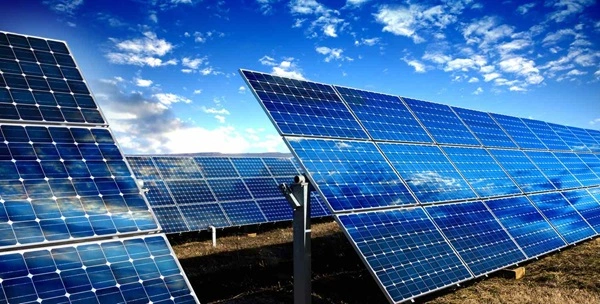India stands at a crucial point in its energy journey. As one of the world’s fastest-growing economies with a population of over 1.4 billion, the country needs enormous and reliable energy supplies to fuel development. At the same time, global pressure to cut carbon emissions, rising fossil fuel costs, and the need for long-term sustainability have pushed India to explore cleaner sources. Among all renewable options, solar energy has emerged as the strongest contender, offering huge potential for India’s future energy landscape. Here’s why solar energy has such a bright future in the country.
1. India’s Ideal Geography for Solar Power

India is naturally blessed with abundant sunlight. Most regions receive 250–300 sunny days per year, giving the country one of the highest solar irradiance levels in the world. States like Rajasthan, Gujarat, Telangana, Madhya Pradesh, and Maharashtra have vast open lands and high solar radiation, making them perfect for large-scale solar parks.
This consistent sunlight ensures reliable power generation and reduces dependence on weather fluctuations—an advantage that solar energy enjoys over other renewables like wind or hydro in many regions.
2. Government’s Strong Push Toward Renewable Energy
The Indian government has aggressively promoted solar energy through policies, subsidies, and long-term goals. Under the National Solar Mission, India initially set a target of 20 GW of solar capacity by 2022, later revised to 100 GW due to rising demand. Today, India continues to push for even higher capacities as part of its commitment under the Paris Climate Agreement.
Key government initiatives fueling solar growth include:
- PM-KUSUM Scheme, encouraging farmers to adopt solar pumps.
- Rooftop Solar Programme Phase II, offering subsidies for household solar setups.
- Solar Parks Scheme, enabling faster development of large-scale solar farms.
- PLI Scheme for Solar Manufacturing, encouraging domestic production of solar panels and cells.
These initiatives reduce costs for consumers, attract investments, and create a stable environment for long-term solar expansion.
3. Declining Costs of Solar Panels and Equipment
A big reason behind the rising popularity of solar energy is falling costs. Over the last decade, technological improvements and mass manufacturing have significantly reduced the price of solar panels, inverters, and storage systems.
Today, solar power tariffs in India are among the lowest in the world, sometimes dropping as low as ₹2–₹2.5 per unit in auctions. This makes solar not only environmentally friendly but also economically attractive compared to coal or gas power.
Cheaper solar technology also means:
- Faster payback period for rooftop panels
- Increased adoption among households and businesses
- Higher investments from private companies and global investors
4. Rising Energy Demand in a Growing Economy
India’s energy demand is expected to double by 2040, driven by urbanization, industrial growth, and rising household consumption. Traditional sources like coal and oil are either expensive, polluting, or dependent on imports.
Solar energy offers a cleaner, more sustainable alternative that can meet future demand without harming the environment. It also helps reduce the country’s energy import bill, which currently strains foreign exchange.
As electric vehicles (EVs) become more common, solar-powered charging stations are expected to rise, creating a clean energy loop and reducing reliance on fossil fuels.
5. Solar Energy Brings New Jobs and Economic Growth
The solar sector is creating millions of new jobs across installation, manufacturing, maintenance, research, and innovation. India’s push for domestic solar manufacturing under the Make in India initiative is attracting global companies and encouraging homegrown firms to scale up production.
The solar industry contributes to:
- Job creation in rural and urban areas
- Boosting MSMEs in the renewable sector
- Infrastructure development, especially in underdeveloped regions
This makes solar not just an environmental solution but also an economic opportunity for India.
6. Rooftop Solar Adoption Is Growing Among Households
Urban households, apartments, commercial buildings, and industries are increasingly shifting to rooftop solar systems due to cost savings and government subsidies. Many DISCOMs now offer net metering, allowing households to sell excess power back to the grid. This helps reduce electricity bills and encourages more Indians to go solar.
Even rural homes are adopting small solar kits that power lights, fans, and small appliances—improving quality of life in areas with limited grid connectivity.
7. Energy Security and Independence
India currently imports large amounts of crude oil, natural gas, and coal. This dependence makes the country vulnerable to global price fluctuations and geopolitical tensions. Solar energy provides a secure and domestic source of power, reducing reliance on imports and strengthening national energy security.
In the long run, solar energy will help India become more self-reliant in energy production, aligning with the Atmanirbhar Bharat vision.
Conclusion: The Future Is Solar-Powered
India’s solar energy future shines bright due to its geographical advantages, supportive policies, falling technology costs, rising energy needs, and push for sustainability. As the world shifts toward clean energy, India is positioning itself as a global leader in solar power.
For households, businesses, and the overall economy, solar energy represents not just an environmental choice but a smart economic decision. With continuous innovation and strong government support, solar power is set to play a central role in India’s energy journey for decades to come.

